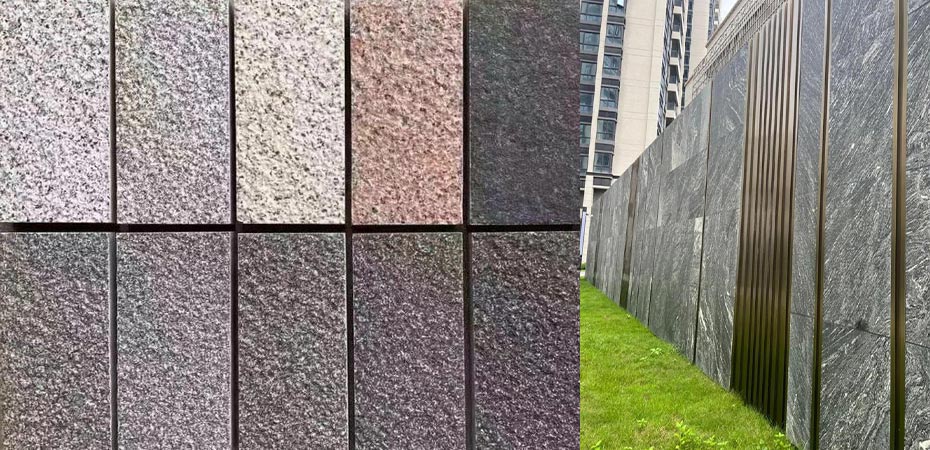What Are You Looking For?
The process of antique finished natural stone
May 06, 2024
Due to the different materials and structures of granite and marble, each with its own characteristics, the processing and production methods of antique finished granite and marble are different.
Processing of antique finished granite
Due to the hard texture of granite, the first step is to use flame or high-pressure water flushing to create a rough surface of the flamed or rough finish (which can also be processed into lychee sandblasted finish, etc., but the effect is not very good). Note that when processing into a rough surface, it should be rougher than a regular flamed finish, which can avoid the next step of using a stone grinding brush to make the stone slab too smooth and lose the three-dimensional sense of the layout.
Next, use a stone grinding brush for brushing and grinding, preferably using a steel wire brush first to perform a rough brush to remove the loose material on the granite surface and shape it. This not only increases efficiency, but also reduces equipment wear and can extend the service life of the grinding brush.
Afterwards, according to the specific requirements of the customer, use a grinding brush from coarse to fine mesh to polish in sequence until the slab surface reaches the required effect and gloss. If the customer requests a smooth honed effect, they only need to use four processes: steel brush, 36 # (or 46 #), 60 # (or 80 #), and 120 # (or 180 #). If you want to achieve the effect of mercerization, you need to add three more processes: 240 #, 320 #, and 500 #. Of course, if all processes are done, the effect will be better. As for some outdoor slabs that do not require much glossiness, they can be directly brushed with a steel wire brush.
Processing of antique finished marble
Due to significant differences in the material of different types of marble, the processing method should be selected based on the differences in the characteristics of each type of marble .
Marbles containing more calcium and magnesium carbonate or with cracks and pores can be soaked in hydrochloric acid for corrosion, with a soaking time of about 10-20 minutes (depending on the specific type of stone). Afterwards, use a steel brush to remove the residue that attacks cracks and holes to increase the three-dimensional sense of the stone surface. Finally, use a grinding brush from coarse to fine mesh to polish in sequence until the slab surface reaches the gloss required by the customer.
If it is marble with a large amount of calcite, steel brushes can be directly used for processing. Similarly, a steel wire brush can be used to first create an uneven three-dimensional surface effect, and then a grinding brush from coarse mesh to fine mesh can be used in sequence for polishing. Usually, 180 #, 240 #, 320 #, and 500 # grinding brushes are used for processing. If the texture of marble is relatively hard, the previous steps can be added appropriately.